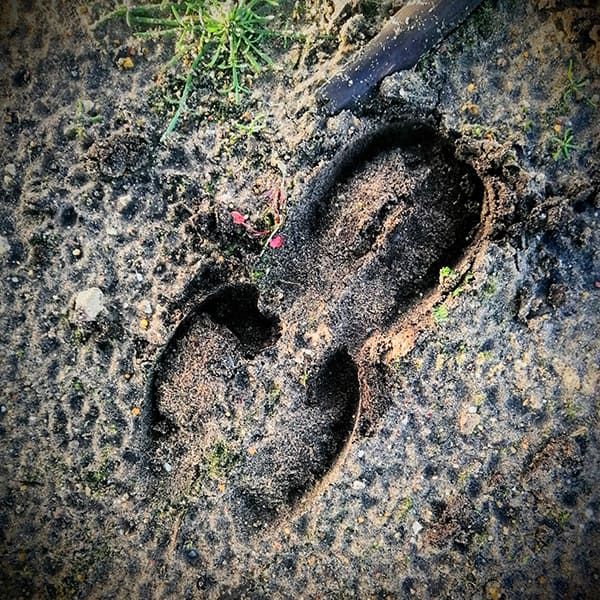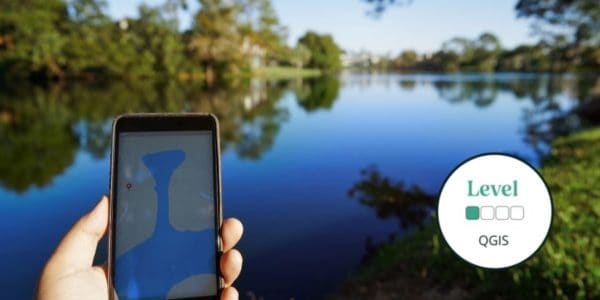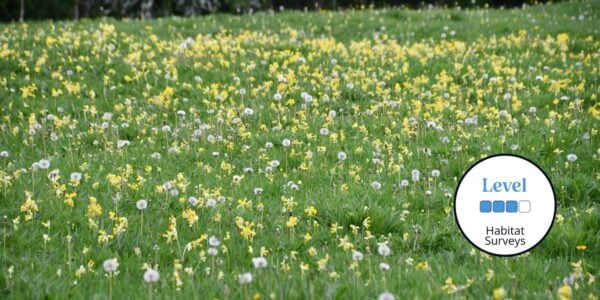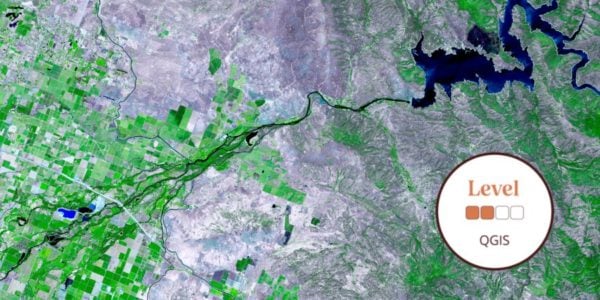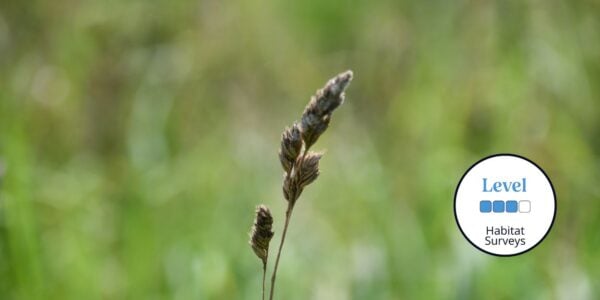This beginner course is a great place to start for those looking to improve their ability to identify a range of wildlife tracks and signs.
You will learn skills to confidently identify a variety of mammal and bird activity including the physical appearance and ID features of a tracks, feeding signs, homes, and droppings. You will also have plenty of time exploring outdoors to put your new found knowledge into practice, leaving you with a solid introduction to the world of tracking.
Wildlife tracking is an ancient science and art – one that humans once relied upon for survival. Tracking involves a range of skills such as identifying the animal that left the clue, working out what it was doing and when, and even finding the animal itself. Tracking is a great way to hone our ability to observe details around us and to build our knowledge of wildlife, specifically their presence, movements and feeding ecology. This place-based training course from the Field Studies Council includes a balance of classroom-led and outdoor learning opportunities focusing on building introductory knowledge of wildlife tracks and signs, and the identification/ understanding of some examples of these. It will introduce Master Listing as a concept to help objectively interpret what we find in the field.
What will be covered during this course?
-
- Tracking will be introduced as a science and art that can deepen our connection, appreciation and understanding of our wildlife.
- Introduction to mammal and bird foot morphology and how that relates to the tracks we find in the field and helps us identify the track maker.
- Commonly found wildlife signs will be introduced (droppings, homes and beds, feeding signs, scrapes and rubs, trails, feathers, hair and bones), and you will be taught what they tell us about the animals that left them, including identification.
- Master listing will be introduced and how it can be used to work out difficult tracks or signs.
By the end of the course, you will be able to:
-
- Have a deeper appreciation of the evidence that our wildlife leaves on the landscape.
- Be able to understand mammalian foot morphology and identify some common mammal tracks.
- Be able to identify some common bird tracks.
- Be able to identify different wildlife signs and what they mean.
- Understand the importance of Master listing.
- Be able to use master listing to work out which animal left a track or signs
Who Should Attend? – Nature enthusiasts, students, rangers, early career ecologists and conservationists.
Knowledge Level – Beginner. Level descriptors can be found on the following web-page: Framework and Course Level Descriptors
Prior Knowledge – No existing knowledge, or experience is needed for this course. Just an enthusiasm for wildlife and a willingness to explore and learn.
PLEASE NOTE the course fee is for tuition only. There are no accommodation, refreshment, or evening meal facilities available with this course.
Bookings will close if course capacity is reached.
Please email [email protected] if you have any questions.
Group Bookings Made Easy
If you have a group of 10 or more individuals wanting to complete one of our courses, our team are available to discuss your options – from discounts to private/bespoke team courses. Click here to find out more!
If we are unable reach viable numbers for this course, we will inform you of the course cancellation 14 days prior to the course run. We would recommend when purchasing accommodation and/or travel you should take out your own insurance.
Tutor: David Wege
Tutor Bio
David Wege helps teach nature tracking with Woodcraft School Ltd in Sussex. He has done this for the last 7 years, alongside a 30-year career in international biodiversity conservation with BirdLife International. David has now left the office behind to focus on reviving the art of tracking – an art that has long been lost in the UK, but which provides endless opportunities to connect with nature, survey and monitor wildlife and increase our understanding, appreciation and knowledge of the animals around us. David is a life-long, passionate birdwatcher, wildlife photographer and all-round naturalist.
Example Timetable
Timetable
This timetable is subject to change but should give a clear outline of what to expect.
Day 1
10:00 am Introductions
10:30 am Classroom sessions covering
- Tracking
- Types of tracks – main mammal groups
- Track identification
11:30 am Break and prepare for field session
11:45 am Guided walk
1:00 pm Lunch - not provided
2:00 pm Classroom session covering:
- Different types of signs: Homes, Scats and Feeding
3:00 pm Break and prepare for field session
3:15 pm Guided walk to apply classroom knowledge
4:30 pm Classroom plenary and final questions
5:00 pm End of Day 1
Day 2
10:00 am Review of Day 1
10:15 am Classroom sessions covering
- Types of tracks – additional mammal groups and birds
- Track identification
11:15 am Break and prepare for field session
11:30 am Guided walk
1:00 pm Lunch - not provided
2:00 pm Classroom session covering:
- Different types of signs: territorial markings, skulls, bones and feathers
- What is master listing and how to use
3:00 pm Break and prepare for field session
3:15 pm Guided walk to apply classroom knowledge
4:30 pm Classroom plenary and final questions
5:00 pm End of course
Please note accommodation, refreshments and an evening meal are not included.
What's Included
The course has been carefully created by expert tutors and educators to help you continue to build your knowledge and apply it within the field surrounded by like-minded individuals
The course includes:
- Classroom learning covering the theory of the species
- Field excursions to apply new knowledge
- Expert tuition for which the Field Studies Council is renowned
- Clear objectives and progression
You can rest assured that the absolute best content from an expert in environmental education will be provided. In choosing a Field Studies Council course, you will be joining thousands of people who learn with us each year.
Bursaries and Subsidies
Student Discount
This course is eligible for a student discount. If you are a current student, please use discount code BioStudent20 at checkout for 20% off all Biodiversity courses.
Before You Attend
What to Bring:
-
- Notebook and pencil
- Camera to capture images
- Lunch and refreshments
- Sensible footwear and clothing for being outdoors
You may wish to purchase the following Field Studies Council publications to enhance your experience:
There will be a member of staff with first aid training and access to a first aid kit on site. If you have special medical or access requirements, please let us know as soon as possible so we can plan the course.
Sorry this course booking is closed

